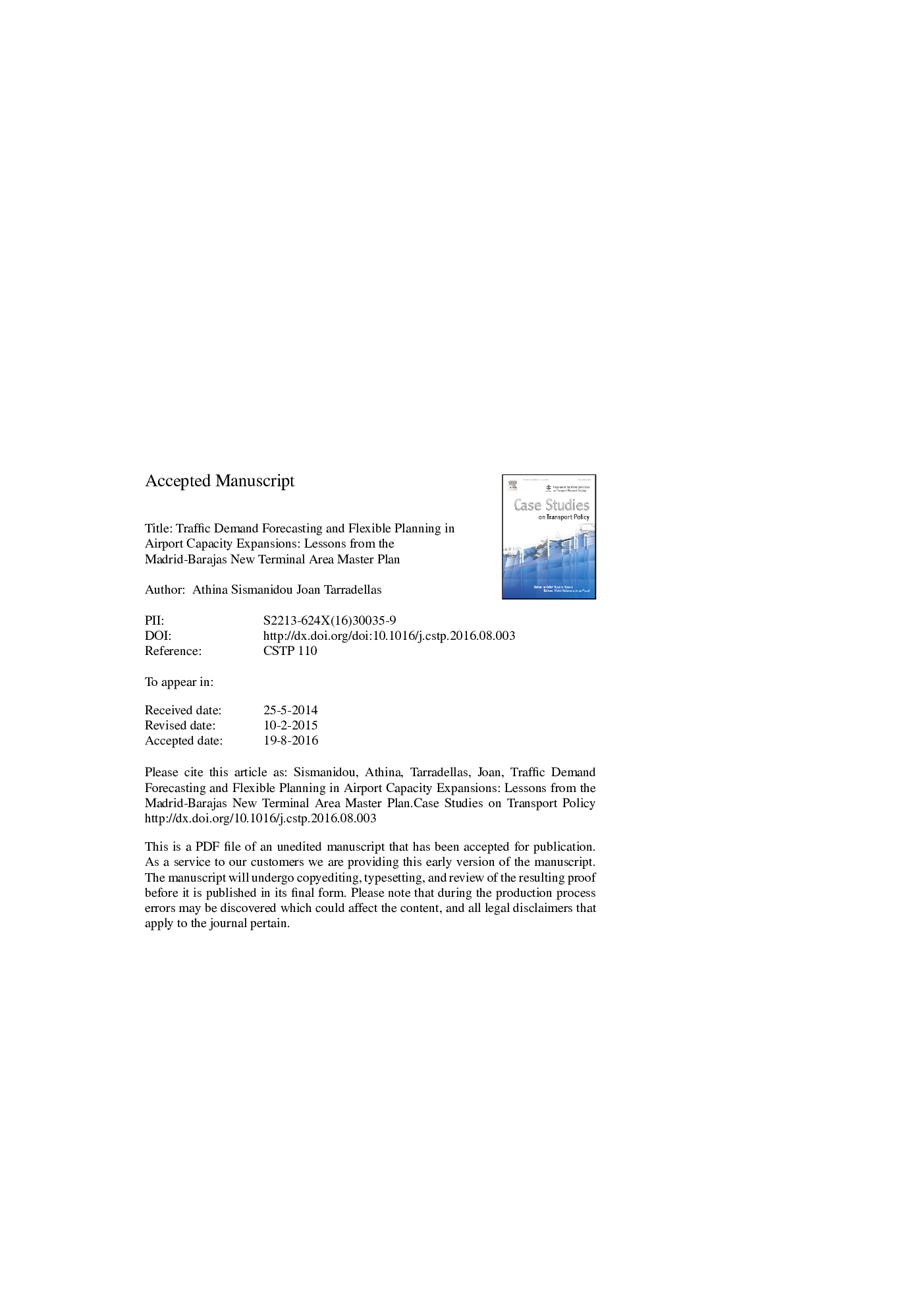| Article ID | Journal | Published Year | Pages | File Type |
|---|---|---|---|---|
| 4911648 | Case Studies on Transport Policy | 2017 | 34 Pages |
Abstract
Liberalization and constant but irregular traffic growth have made the airport sector hard to recognize compared to some decades ago. The new paradigm for airport management calls for flexible capacity planning models. However, airport infrastructure investments are cumbersome and almost never efficient in the short run. It is difficult to assess the right time for and right size of such an investment. Traffic demand forecasts become of critical importance in the planning phase. This case study performs an ex post evaluation of the demand forecasts included in the Madrid-Barajas master plan, in view of the airport's last capacity expansion in 2006. We deduct that a more robust (and neutral) forecasting methodology, coupled with a more flexible approach to planning in general, could have led to a more efficient and economically sound infrastructure project.
Related Topics
Physical Sciences and Engineering
Engineering
Civil and Structural Engineering
Authors
Athina Sismanidou, Joan Tarradellas,
